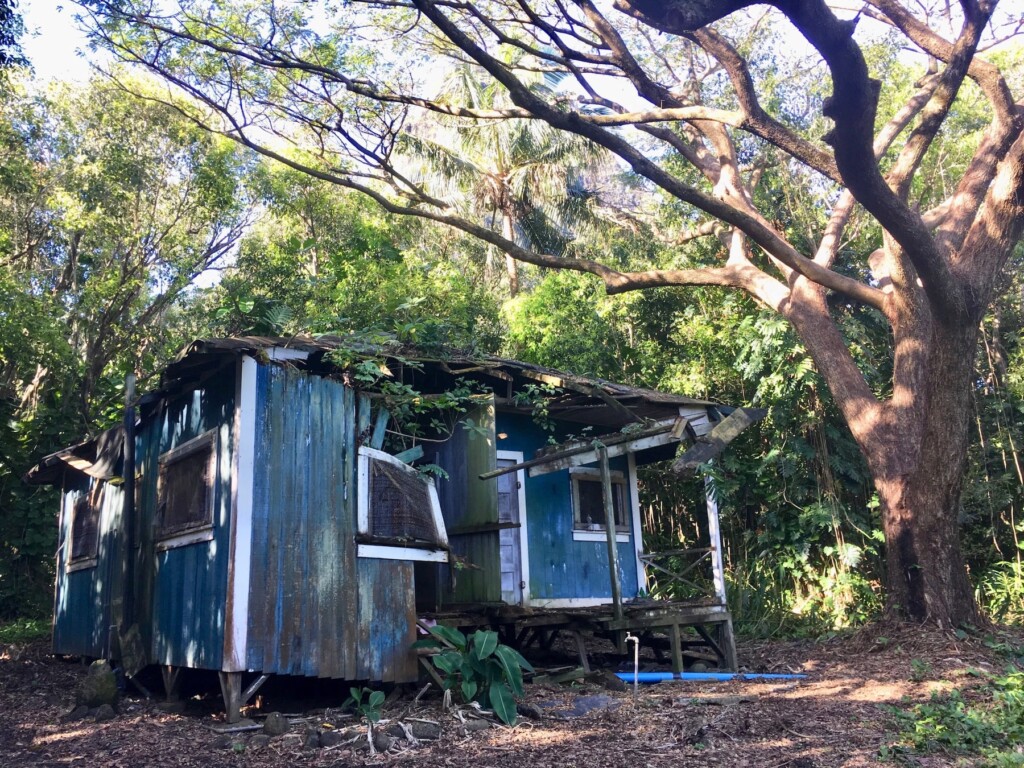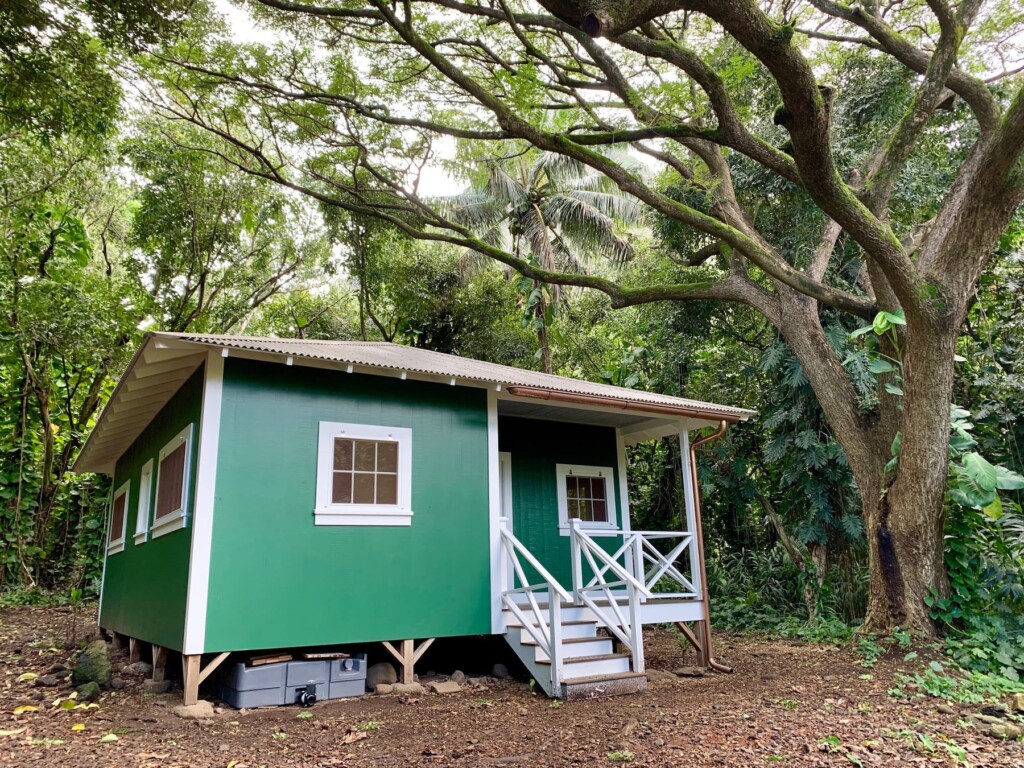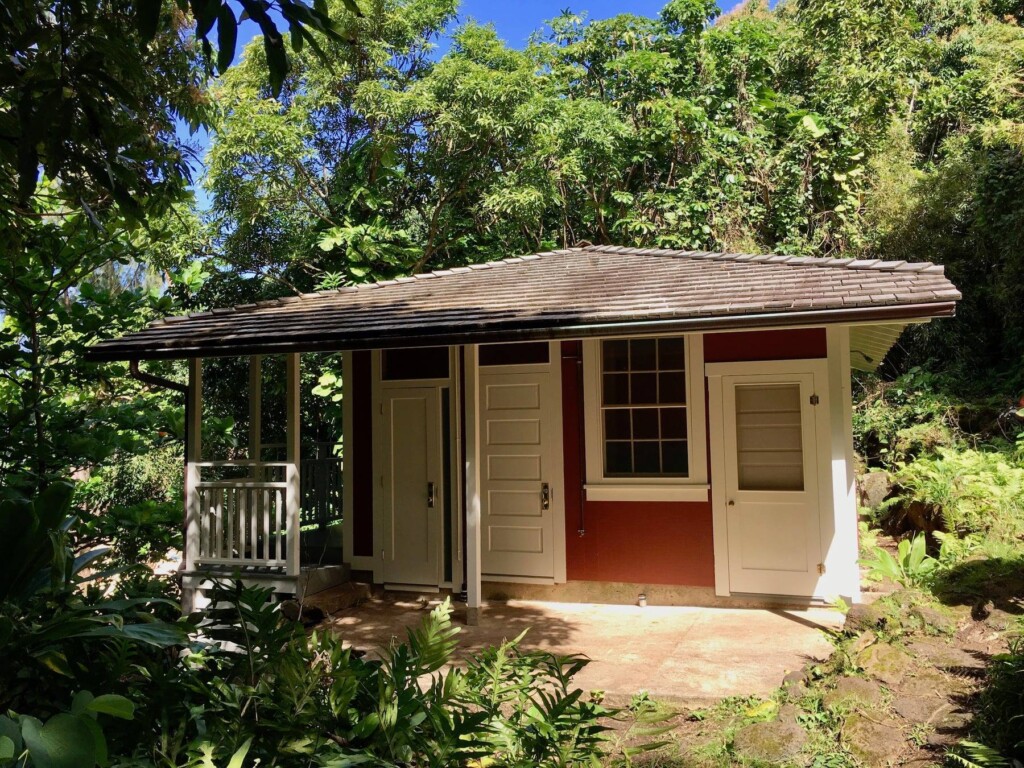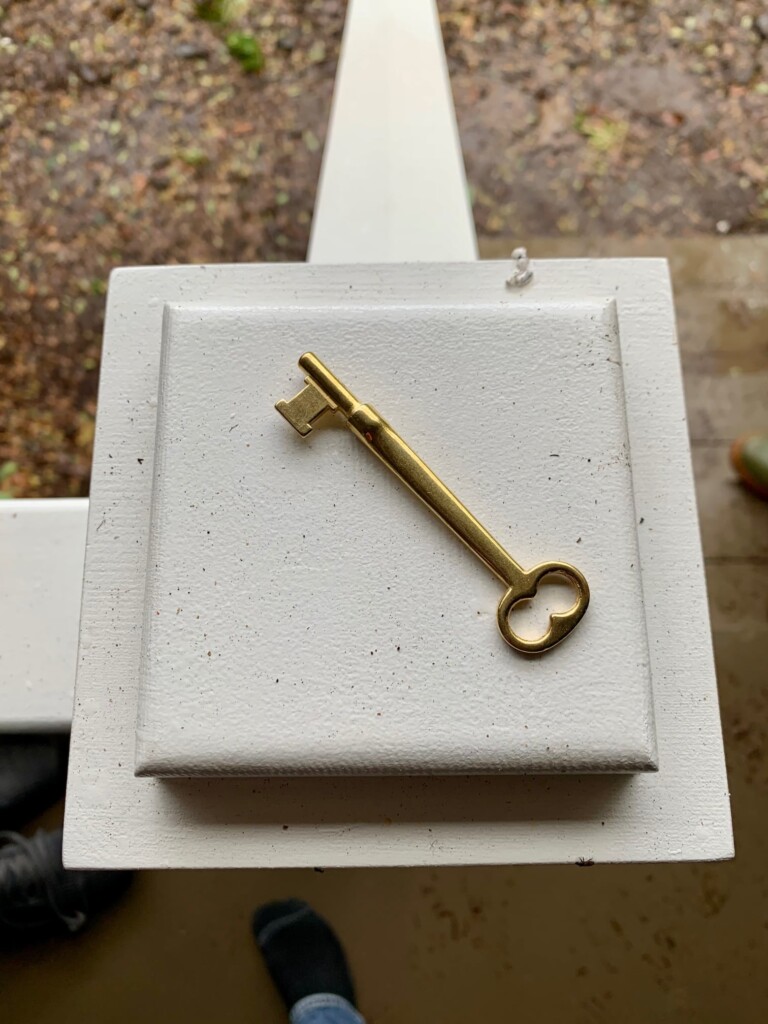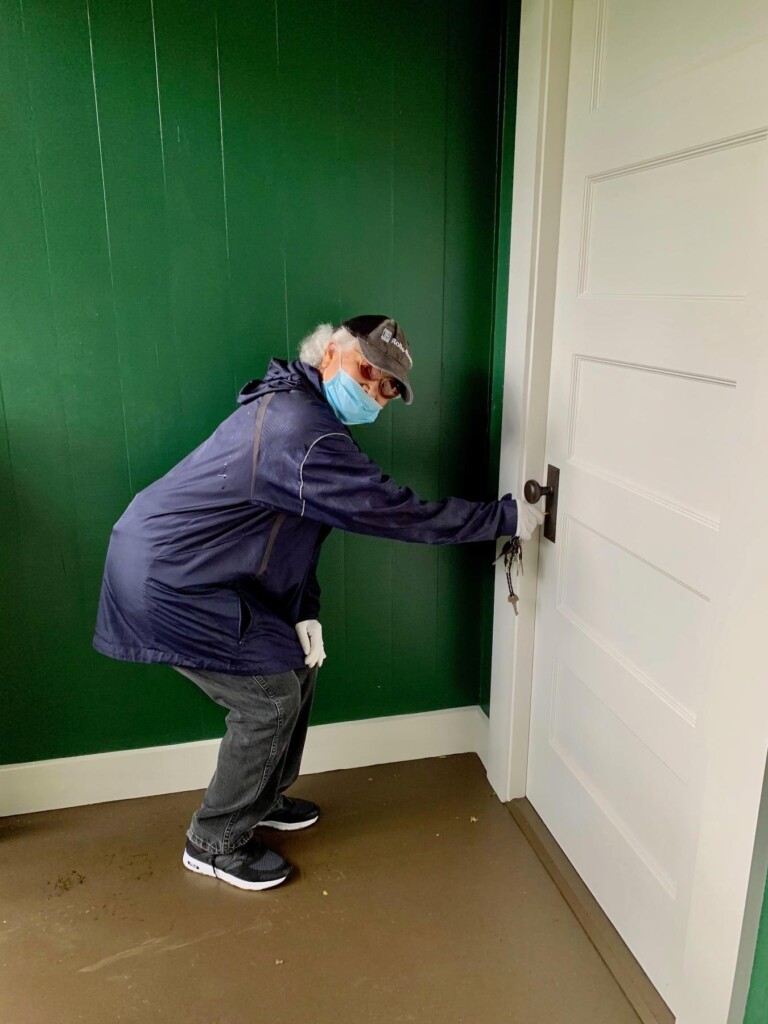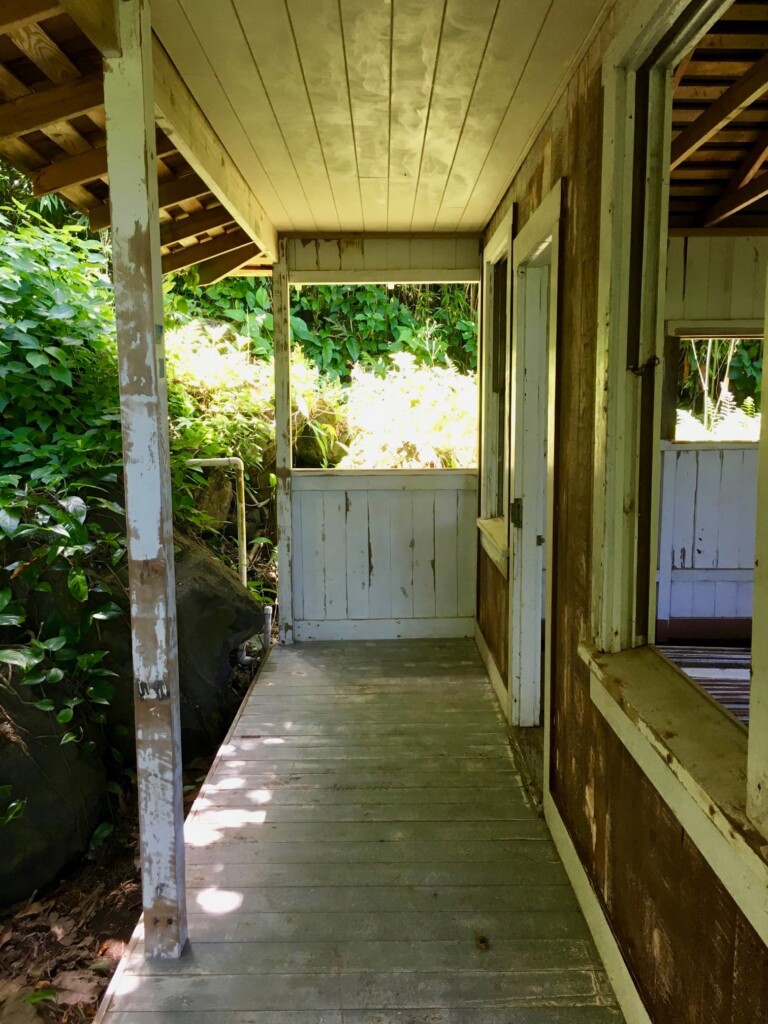A Preservation Award will recognize the Allerton Cottage and Montgomery House Restoration at the 2021 Preservation Honor Awards Virtual Ceremony on May 21st. Click here for further information.
The project is being awarded for the restoration of two historic buildings within the Hā‘ena State Park on Kaua‘i, an integral component of the park’s Master Plan. At the start of the project, both structures were extremely deteriorated. Restoration included replacing the corrugated roof and frame, damaged or missing foundation members, wood decking and siding and reconstruction of wood single-hung multi-lite windows and five panel doors. The Montgomery House and the Allerton Caretaker’s Cottage can now be actively used by both park rangers and cultural practitioners, including lineal descendants of inhabitants of the area. This project exemplifies the hands-on work of historic preservation and highlights the Plan’s commitment to preserving the complete history of Hā‘ena State Park.
The restoration also underlines how deeply preserving places can touch people’s lives. Below, Alan Carpenter, the assistant administrator of the State Parks Division of the Department of Land and Natural Resources shares a heartwarming recap of his experience participating in the project.
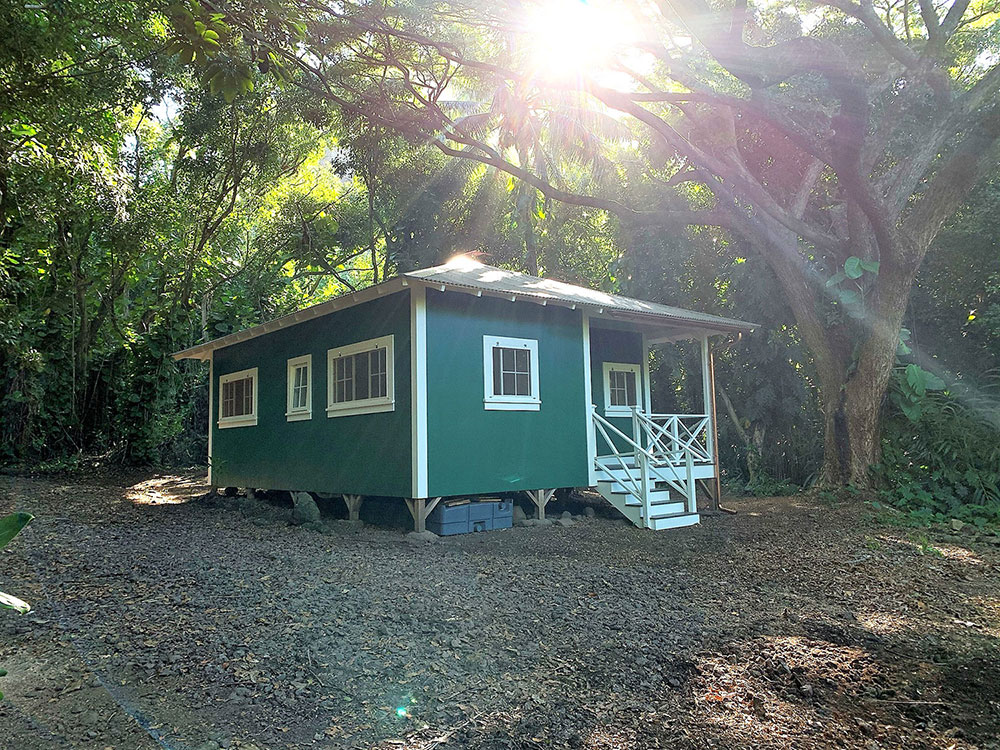
Montgomery House front elevation after restoration. Photo credit: MASON.
Alan Carpenter via Facebook February 11, 2021
A kūpuna unlocks the door to a humble plantation home in Hā’ena and the moment becomes an instant highlight of my park career. Kimi broke this story a few days ago, but I feel compelled to add some more context.
One of the aspects of the Hāʻena State Park Master Plan closest to my heart was the proposed restoration of two humble plantation homes within the park landscape, among the last remaining vestiges of early 20th century life in Hāʻena – a period when a group of native Hawaiians huiʻd up to purchase their entire ahupuaʻa back from the government following the conversion from traditional land tenure to private ownership following Western constructs.
Aunty Henrietta “Etta” Phillips was one of the first Hāʻena residents I met while conducting the archaeological inventory for the presently restored lo‘i system within the park in the early 2000s.
As a lineal descendant, she was consulted when burials were discovered within the park, and I fondly recall her keeping me and the iwi kūpuna company when I had the unenviable task of disinterring a burial that had been unearthed by huge winter surf in between the roots of one of the iconic ironwood trees along the Kēʻē dune face. Aunty fended off curious tourists, and told me stories of her early life in the area and later times with her husband Earl. She is the epitome of Hawaiian grace and humility.
Henrietta continued to participate in the master planning process over the next two decades, and at some point I learned that she was actually born in one of the two remaining homes – the “Montgomery House”, in 1939. Mr. Montgomery had a connection to her grandfather, Kalei Kelau, who was born in 1884, and perished in the 1946 tsunami, which devastated communities from Hāʻena to Hilo. Eight children of Hā‘ena were also lost that cruel April Fool’s day – all native Hawaiian, aged 5 years to 3 months. Though Aunty has not told me that story (she was 6), I believe she lost 3 younger siblings that day in addition to her tutu kāne. Accounts of that day on Kauaʻiʻs north shore are absolutely harrowing and heroic. It’s probably a blessing if she doesn’t remember it.
Newspaper reports noted that very few of the approximately 60 houses of Ha’ena survived the tsunami. Perhaps the two structures still in the park were protected by their proximity to the high cliffs of Nāpali. They also survived a second devastating tsunami in 1957.
Half a century later, suffering from neglect and a harsh environment, the circa 80 and 90-year old homes were on the verge of collapse when the master plan was being crafted. The Allerton cottage had had its roof torn off by vandals and the Montgomery house was penetrated by tree branches and pure elemental decay. At one point I brought a staff engineer to evaluate their condition and estimate rough costs for rehabilitation. He simply said they couldn’t be saved, at any cost. So I fired him.
Not really, he’s still gainfully employed – but I turned instead to specialists who not only appreciated the historical significance, but also the care and detail necessary to appropriately and sensitively restore the simple buildings to historic standards. We found them in Mike Faye, of Kikiaola Construction and Barbara Shideler of Mason Architects – who specialize in historic preservation. Kikiaola had created the Waimea Plantation Cottages on Kaua‘i’s west side, by rescuing a large number of plantation homes and creating a singular lodging experience. Shideler had been involved in the architectural recording of the Allerton house complex in the late 1980s. Unfortunately, the main Allerton house burned down in 1990. Neither of them were fazed by the condition of the homes. Their expertise and passion were integral to the next steps.
Thus began the odyssey to preserve two humble Hāʻena homes imbued with stories of the land. It would take several years, and the final opportunity was found in the wake of the 2018 flood, which caused further damage to the structures, but also freed up disaster funds for the implementation of the park master plan.
Almost exactly two years ago, we met the contractor at Hāʻena for a pre-construction meeting to formally begin the cottage rehabilitation project.
On that February day, as I drove back to the airport on the empty Kuhiō Highway, shortly after crossing the Waikoko bridge, the base of which was still in its collapsed state that occurred in the 1946 tsunami, I caught out of the corner of my eye a white-haired woman standing aside her car in Waipā. She was waiting for the afternoon caravan that allowed residents to access the closed area–it was Henrietta.
I immediately pulled over, walked across the highway, and was so pleased to be able to tell her in person that just today, we were beginning the restoration of the house she was born in. She was overjoyed, and soon asked, “When it’s ready, can I spend the night in the house with my granddaughters?” I promised to make that happen. From her granddaughters, to her grandfather Kalei Kelau, that house connects five generations of her family to Hāʻena.
This no-so-chance meeting on the side of a country road was, for me, the affirmation that in saving the cottages, we were doing the right thing.
The rehabilitation would be hampered by competing post-flood construction work, the extended highway closure, and later the pandemic. At one point during the park reconstruction, a colleague suggested we should abandon the Montgomery house restoration, and use the house lot area to stockpile spoils from the new parking lot. My answer to him was shorter than this sentence, and of a very different tone. A home that had survived two tsunamis and a biblical flood was not about to be sacrificed to logistics.
Some additional stories emerged along the way, the most poignant of which was, upon pulling up the rotten floorboards in the Montgomery kitchen, it revealed that the house was built directly atop a stone outlined, ʻili paved platform of a hale pili (grass house) that was even older. So the connection to the house goes back considerably more than five generations…
Last week, we conducted the final inspection of the Montgomery House. It was beautiful and painstakingly restored, and again, Aunty Etta was there, along with her daughter and granddaughter. We gave her the golden skeleton key, and she stood on the porch and unlocked the door to the home she was born in 82 years ago.
And yes, my eyes are moist.
The story of the 1946 tsunami is one of so many that can be told in the now restored homes, which will be used for education, and to support park staff, volunteers, and cultural practitioner access to Kauluapaoa Heiau and Keahualaka hula platform – a piko for hula practitioners in Hawai‘i.
I am old enough to have had the privilege of staying in both of these hones while working early in my parks career; I’m glad I’m young enough to have been a part of preserving them for the next generation.
Now – to find some furniture so Aunty Etta can have her sleepover.
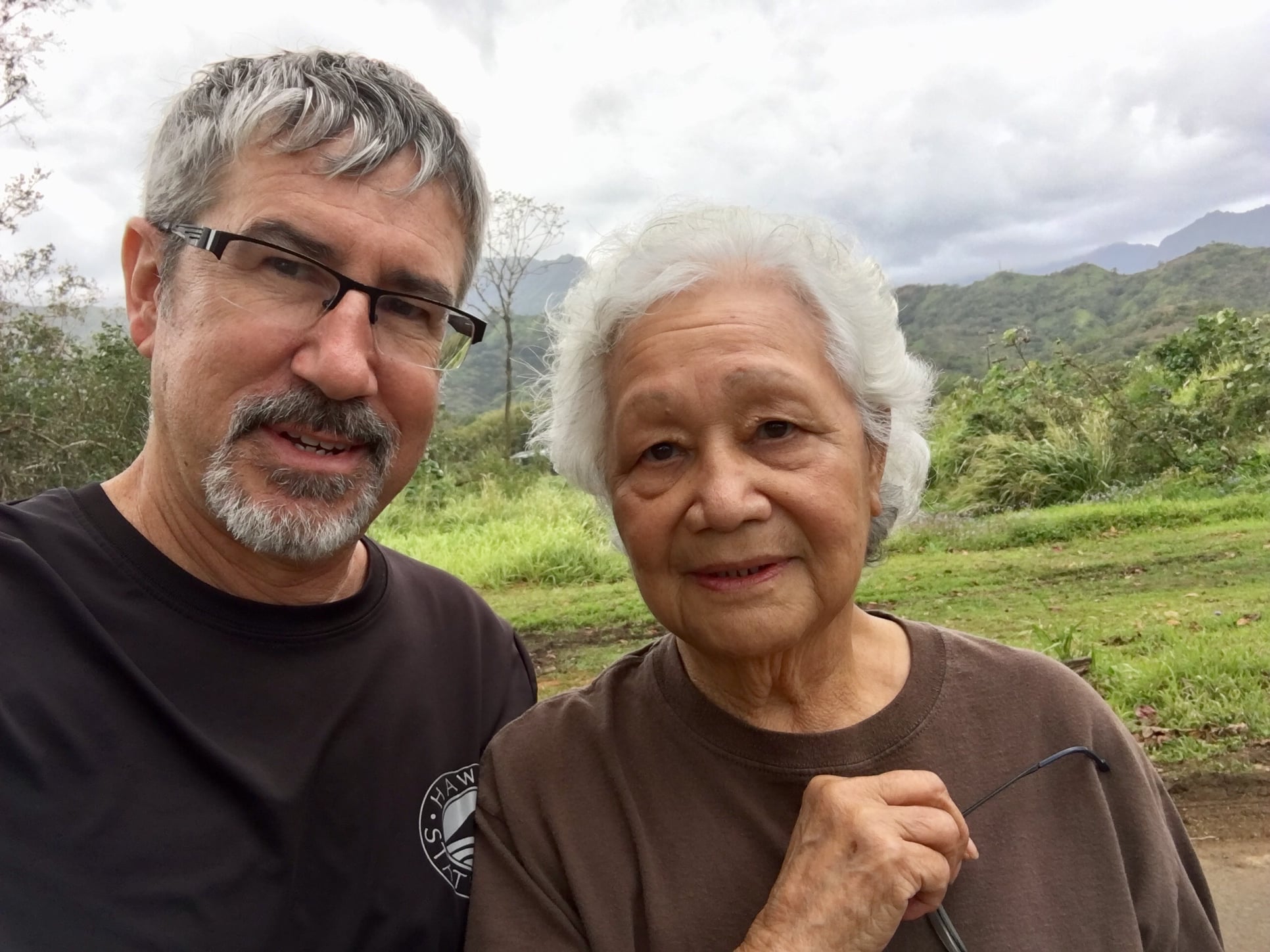
Alan Carpenter and Aunty Henrietta “Etta” Phillips
The Preservation Project Award will be presented to the State of Hawai‘i, Department of Land and Natural Resources Division of State Parks, Mason Architects, Inc. (MASON), Kikiaola Construction Company, Ltd., Micah Pepper–and Aunty Etta.
Photo Gallery of the Project
First row, left to right: Montgomery House before and after restoration; Allerton Cottage, during restoration and after.
Second row, left to right: the golden key, Aunty Etta unlocking the door to reenter her childhood home; the Cottage porch before and after.


